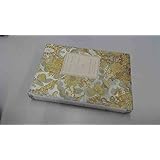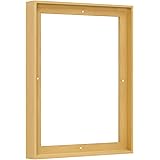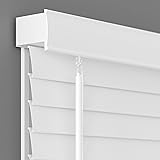Imagine stepping into a room where the existing ceiling light fixture feels like a relic from a bygone era, casting harsh, unflattering light or perhaps barely illuminating the space at all. Many homeowners find themselves in this exact scenario, longing for an upgrade that not only enhances the room’s aesthetic but also improves functionality and energy efficiency. While the video above might offer a glimpse into the physical act of replacing a fixture, the process of successfully fitting a new ceiling light fixture involves much more than just a few quick twists and turns.
This comprehensive guide is designed to demystify the process of installing ceiling lights, taking you from initial planning to the final, illuminated result. We understand that electrical work can seem intimidating; however, with the right preparation, tools, and understanding of basic safety protocols, a stunning new light can be installed by many DIY enthusiasts. Successfully navigating this home improvement project can significantly transform the ambiance and utility of any room, making it a highly rewarding endeavor.
Understanding the Basics of Ceiling Light Fitting
Before any tools are even picked up, it is crucial that a foundational understanding of ceiling light fitting is established. Different types of fixtures exist, each with its own installation nuances and aesthetic contributions. For instance, flush mount lights sit directly against the ceiling, offering a subtle profile, which is often preferred in rooms with lower ceilings or high traffic areas. Conversely, pendant lights dangle from the ceiling, providing focused illumination and acting as a decorative centerpiece, perfect for kitchen islands or dining areas.
Recessed lighting, another popular option, is installed within the ceiling itself, offering a clean, unobtrusive look that can highlight architectural features or artwork. Understanding these distinctions helps in selecting the most appropriate fixture for your specific needs and existing electrical setup. Furthermore, consideration must be given to the primary function of the light – is it for general ambient lighting, task lighting, or accent lighting? Each application demands a different approach to fixture choice and placement.
Essential Tools and Materials for Installing Ceiling Lights
Successfully embarking on a ceiling light fitting project mandates the acquisition of specific tools and materials, ensuring both safety and efficiency. Often, a basic toolkit is sufficient, but some specialized items are indeed indispensable. A voltage tester, for example, is absolutely critical for confirming that the power supply to the fixture has been completely disconnected, preventing accidental electric shocks. Similarly, wire strippers are used to safely prepare electrical wires for connection, ensuring a secure and reliable circuit.
Additionally, a screwdriver set (including both Phillips and flathead types) will be needed for mounting brackets and connecting wires, while electrical tape is important for insulating exposed connections. Wire nuts, conversely, are used to safely join multiple electrical wires together, creating a robust connection. Pliers, especially needle-nose variants, can be incredibly useful for bending or manipulating wires within confined spaces. Imagine if you were to start without these basic provisions; the project would not only be prolonged but potentially unsafe.
Prioritizing Electrical Safety During Installation
When working with electricity, safety is not merely a suggestion; it is a paramount requirement that must be rigorously observed. The first and most critical step before attempting any ceiling light fitting is to completely turn off the power to the circuit at your home’s main electrical panel or circuit breaker box. This cannot be stressed enough, as working on live wires carries a significant risk of severe injury or even fatality. A common mistake is simply flipping a wall switch, which may only cut power to the fixture itself, not the entire circuit.
After the breaker has been switched off, the circuit must be verified as dead using a non-contact voltage tester; a quick check at the fixture’s wires will confirm that no current is flowing. Additionally, wearing appropriate safety gear, such as insulated gloves and safety glasses, is always recommended. It is also advisable to work during daylight hours or with auxiliary lighting to ensure clear visibility, preventing missteps or improper connections. Remember, a cautious approach is always the best approach when dealing with electrical installations.
Step-by-Step Guide to Fitting Your New Fixture
The actual installation of a ceiling light fixture generally follows a logical sequence, which, when adhered to, simplifies the process considerably. Initially, the old fixture must be carefully disconnected and removed after the power has been confirmed as off. Often, this involves unscrewing a mounting plate and gently detaching the existing electrical wires from the fixture’s terminals; be sure to note which wires go where, perhaps by taking a photograph for reference.
Subsequently, the new mounting bracket, which usually comes with the new light fixture, is secured to the junction box in the ceiling. This bracket provides the stable foundation for the new light. Then, the electrical connections are made: typically, the bare copper or green wire (ground) from the house wiring is connected to the ground wire on the fixture, the white wire (neutral) from the house connects to the white wire from the fixture, and the black or red wire (hot/live) from the house connects to the black wire from the fixture. These connections are secured with wire nuts, ensuring a tight and insulated join. Finally, the new light fixture is carefully attached to the mounting bracket, often by screwing it into place or using decorative nuts, and the bulbs are installed before the power is restored.
Troubleshooting Common Ceiling Light Fitting Issues
Despite careful preparation, issues can occasionally arise during or after the ceiling light fitting process. One common problem reported is that the new light simply does not turn on after installation. In such cases, the first course of action should be to re-check the circuit breaker to ensure it hasn’t tripped, followed by verifying all wire connections within the fixture. A loose wire nut or an incorrectly matched wire can easily prevent the light from functioning.
Another potential issue involves flickering lights, which could indicate a faulty bulb, a loose connection at the switch, or even an overloaded circuit. Imagine if your carefully installed new light began to flicker incessantly; it would certainly detract from the desired ambiance. If the problem persists after checking connections, the bulb should be replaced, or a qualified electrician might need to assess the circuit. Sometimes, the mounting plate might not sit flush against the ceiling; this can often be remedied by adjusting the bracket or by ensuring the wires are neatly tucked into the junction box, preventing any obstruction.
Choosing the Right Lumens and Wattage for Your Space
Beyond the physical installation, selecting the appropriate lighting specifications, such as lumens and wattage, is crucial for achieving the desired illumination. Lumens represent the brightness of the light, indicating how much light is visibly emitted by a bulb or fixture. Conversely, wattage measures the amount of energy the bulb consumes; however, with the advent of LED technology, wattage is no longer a direct indicator of brightness. A 60-watt incandescent bulb might produce around 800 lumens, whereas an LED bulb producing the same 800 lumens might only consume 9-12 watts.
For general room lighting, a good starting point is often around 750-1000 lumens for every 100 square feet, though this can vary based on ceiling height, wall colors, and personal preference. Kitchens and task areas often benefit from higher lumen output, potentially needing 1500-2000 lumens per 100 sq ft, while bedrooms might require less. Understanding these metrics ensures that your new ceiling light fitting provides optimal visibility and comfort, transforming the practicality and aesthetic of your living spaces efficiently.











